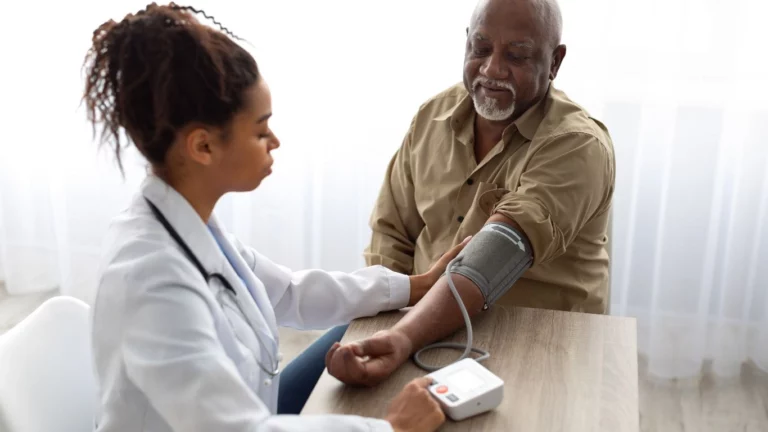Blood Pressure Monitoring at Home: A Complete Guide to Keeping Your Health in Check
Want to keep track of your blood pressure from the comfort of your home? You’re not alone! Monitoring your blood pressure regularly is an important step in staying on top of your health. Let’s dive into how to do it right!
What is Blood Pressure and Why Does It Matter?
Blood pressure is the force of your blood against the walls of your arteries as your heart pumps it around your body. It’s measured in two numbers: systolic (the top number) and diastolic (the bottom number). For example, if your blood pressure reading is 120/80 mmHg, 120 is the systolic pressure (when the heart beats) and 80 is the diastolic pressure (when the heart is at rest between beats). Normal blood pressure is typically around 120/80 mmHg, and anything above that can signal hypertension (high blood pressure), which can lead to serious health problems like heart disease and stroke. When you monitor your blood pressure at home, it’s not just about keeping track of those numbers—it’s about making sure you’re on top of your health, especially if you’re at risk for hypertension or other cardiovascular issues.
Why Should You Monitor Your Blood Pressure at Home?
There are plenty of reasons why monitoring your blood pressure at home is a great idea. Here are some of the top benefits:
- Early Detection of Issues: Regularly checking your blood pressure can help you catch high or low readings early, which means you can take action before things get out of hand.
- More Accurate Readings: Doctor’s office readings are often affected by something called “white coat syndrome” (nervousness when seeing the doctor), which can lead to inaccurate results. Home readings are often more relaxed and true to your normal levels.
- Better Management: If you’ve already been diagnosed with hypertension, keeping an eye on your blood pressure helps you manage your condition better. You’ll be able to see if lifestyle changes or medication are working.
- Convenience: You can check your blood pressure whenever it’s convenient for you, whether that’s in the morning before work or after dinner at night. No more waiting for a doctor’s appointment!
How to Monitor Your Blood Pressure at Home
Okay, so how do you actually go about it? Here’s a step-by-step guide to help you get the most accurate results when monitoring your blood pressure at home:
Step 1: Choose the Right Blood Pressure Monitor
There are two main types of blood pressure monitors: manual (aneroid) and automatic. For home use, automatic monitors are generally the way to go because they’re super easy to use. Look for one that fits comfortably around your upper arm, as these tend to be more accurate than wrist monitors. Popular brands like Omron or Withings offer reliable options.
Step 2: Prepare Yourself
Before you check your blood pressure, take a few minutes to relax. Sit down in a quiet place and rest for about 5 minutes. Avoid caffeine, alcohol, or smoking for at least 30 minutes before taking your reading, as these can skew your results. Also, make sure your bladder is empty—having a full bladder can lead to higher readings!
Step 3: Take the Measurement
To get the most accurate reading, position your arm so that your elbow is at heart level and your feet are flat on the floor. Follow the instructions for your specific device to ensure you’re using it correctly. Most monitors will give you a reading within 30-60 seconds. Try to take your reading at the same time every day, preferably in the morning before breakfast.
Step 4: Record Your Results
It’s essential to keep track of your readings over time. Some devices even come with memory storage to save your measurements automatically. If your device doesn’t, you can always jot them down in a notebook or use an app to track your results. Having a log of your readings will make it easier for your doctor to assess your progress.
What’s a Normal Blood Pressure Reading?
Normal blood pressure is typically around 120/80 mmHg. But it’s important to know the categories of blood pressure readings:
- Normal: Less than 120/80 mmHg
- Elevated: Systolic between 120-129 and diastolic less than 80 mmHg
- Hypertension Stage 1: Systolic between 130-139 or diastolic between 80-89 mmHg
- Hypertension Stage 2: Systolic 140 or higher or diastolic 90 or higher
- Hypertensive Crisis: Systolic over 180 and/or diastolic over 120 (this requires immediate medical attention)
If your numbers fall in the elevated or hypertensive range, it’s time to talk to your doctor about how to lower them.
Tips for Accurate Blood Pressure Monitoring at Home
For the most accurate readings, keep these tips in mind:
1. Take Multiple Readings
It’s a good idea to take two or three readings, about 1-2 minutes apart, and average them out. This helps to ensure accuracy and account for any slight fluctuations in blood pressure.
2. Check at the Same Time Each Day
Try to take your blood pressure at the same time every day. Consistency is key when tracking your numbers over time.
3. Use Proper Technique
Remember to follow the instructions for your blood pressure monitor and make sure you’re seated correctly. Small mistakes can lead to inaccurate readings.
4. Don’t Stress!
Your blood pressure can spike if you’re feeling stressed, so try to stay calm and relaxed before taking your measurement. If you get a reading that’s higher than usual, take a few deep breaths and try again.
Conclusion
Blood pressure monitoring at home is a simple yet powerful tool in managing your health. With the right device, technique, and consistency, you can keep track of your blood pressure and take proactive steps toward better health. Whether you’re managing hypertension or just keeping an eye on things, home monitoring puts you in the driver’s seat when it comes to your health.
Appendices
References
For more information on blood pressure and how to manage it, check out these resources:
- American Heart Association. (2023). How to Measure Your Blood Pressure. Read Article
- National Heart, Lung, and Blood Institute. (2024). Blood Pressure Basics. Read Article
- Johns Hopkins Medicine. (2023). Home Blood Pressure Monitoring: How to Do It Right. Read Article
FAQs
Here are some frequently asked questions about blood pressure monitoring at home:
- How often should I monitor my blood pressure at home? If you’re managing hypertension, aim to check your blood pressure once or twice a day, depending on your doctor’s advice. If you’re just tracking your numbers, once a day or a few times a week is usually enough.
- Can I use a wrist monitor instead of an arm monitor? While wrist monitors can be convenient, arm monitors are generally more accurate. If you use a wrist monitor, make sure to follow the instructions closely for the best results.
- What should I do if my blood pressure is high at home? If you get a high reading, try taking a few deep breaths and measuring again. If the readings stay high, contact your doctor for advice.
- Can stress affect my blood pressure readings? Yes, stress can cause temporary spikes in blood pressure. Make sure you’re in a calm state before measuring your blood pressure for the most accurate results.
- Should I rely solely on home monitoring? Home monitoring is great, but it should be used in combination with regular check-ups with your doctor for a complete picture of your health.
Disclaimer: The information in this article is for educational purposes only. Always consult a healthcare professional for advice specific to your condition and health needs. Blood pressure management should be tailored to your personal health circumstances.






